Can You Use Ipad Air to Draw
iPad Pro vs iPad Air: Which Apple tablet is right for you?
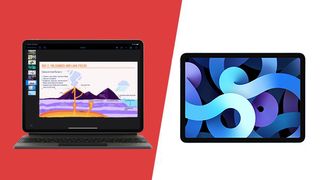
Deciding between an iPad Pro vs iPad Air got a lot more complicated in 2020. With the new iPad Air 4 adopting the same fancy all-screen design language as the the Pro line up, the differences between the two aren't as clear-cut.
The iPad Air is comfortably the more affordable of the two, while the iPad Pro is the more powerful and feature-packed model. But do those features justify the price hike?
Both are extremely capable, so is the Air all the tablet you'll need, or should you spend the extra to get the features and quality-of-life improvements that the iPad Pro brings?
We'll go through everything you need to know about both tablets, picking out all the differences that have a real impact, and helping you to know that you're buying the best iPad for you.
More decisions to make? Our iPad model guide has all the info you need.
- Browse iPads at Apple.com
iPad Pro vs iPad Air: Price & release date
The current generation of iPad Pro was released in May 2021. It comes in versions with 11-inch and 12.9-inch screen sizes, and prices for the 11-inch model start from £769/$799 for a model with 128GB of storage, £869/$899 for 256GB, £1069/$1099 for 512GB, and £1269/$1299 for 1TB.
The 12.9-inch model starts from £969/$999 for 128GB, £1069/$1099 for 256GB, £1269/$1299 for 512GB, and £1469/$1499 for 1TB.
Those prices are for the Wi-Fi-only models; if you want 4G connectivity as well, and of those models is available with it, for an additional £150/$150.
The current iPad Air was released in September 2020. It starts from £579/$599 for 64GB of storage, or you can get 256GB for £729/$749.
Again, that's for Wi-Fi-only, but you can add 4G potential for an extra £120/$130.
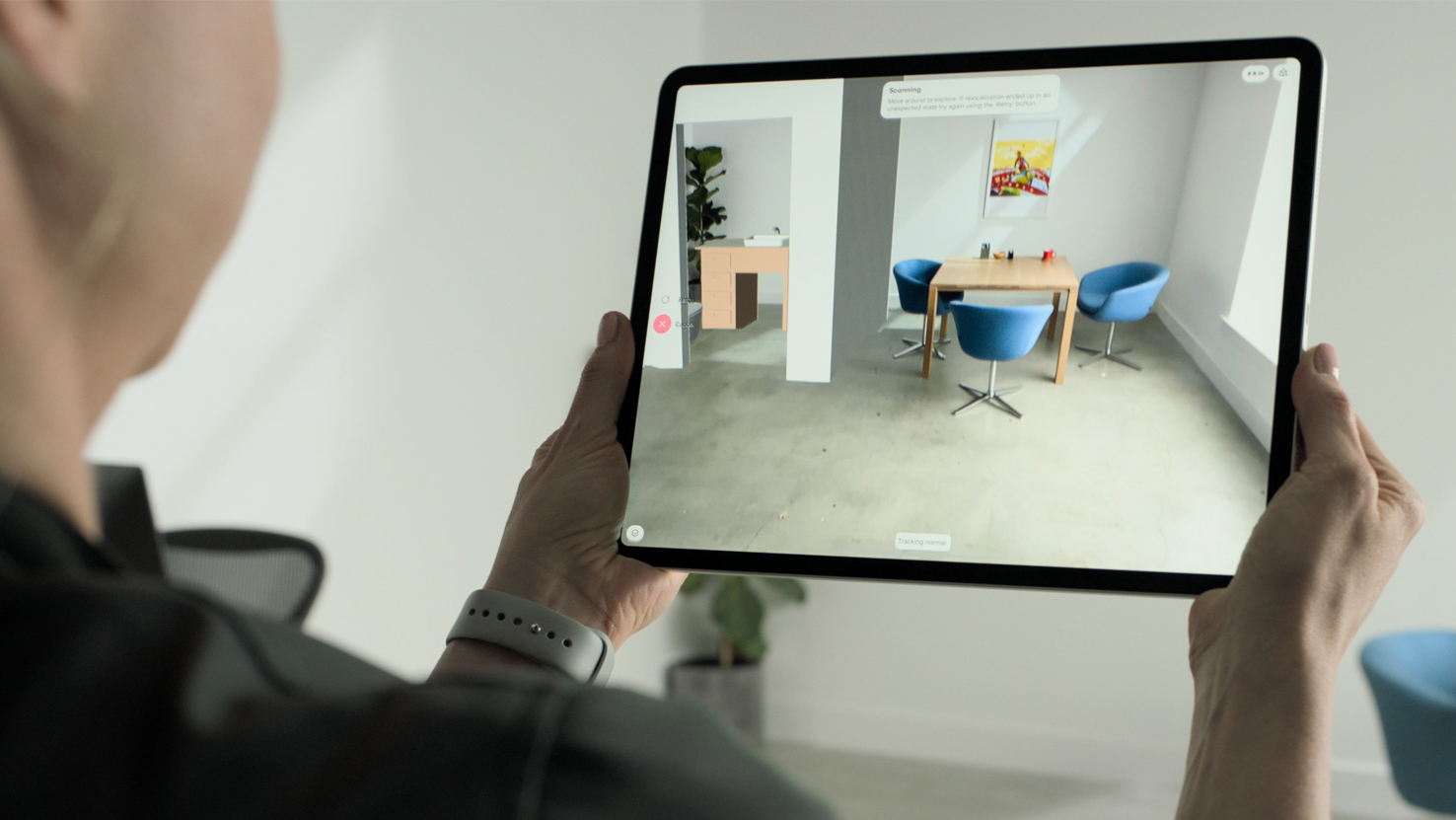
iPad Pro vs iPad Air: Design & features
The current iPad Pro design was the first major change to the look of the iPad since the very first model (though obviously it had been heavily refined over the years). But in 2020, the iPad Air joined the all-screen design party. While they look similar, there are some minor differences: the Air features marginally thicker bezels, and is very slightly thicker. But unless you're holding both models side-by-side, you're unlikely to notice the difference.
The iPad Pro features Face ID for unlocking the device, whereas the iPad Air has Touch ID built into the power button. While Face ID is truly impressive tech, it isn't exactly pandemic-proof, as anyone who's tried to unlock it while wearing a face mask will attest. For now, at least, Touch ID could actually be the preferable option.
Both iPad models have a single USB Type-C port, which means you can connect accessories to it easily, either directly or via a USB-C adapter (or even a hub): microphones, USB storage, 4K monitors, cameras for importing photos – it's usefully flexible. And both iPad models are compatible with Apple's brilliant (but expensive) Magic Keyboard, making either a worthy laptop replacement in certain situations.
The iPad Pro has better speakers than the iPad Air, with a tweeter and woofer configuration in all four corners, so however you hold it, it can create a sound balance with convincing stereo and good balance – the quality of these speakers is kind of mind-blowing, actually, given the size of device the sound is coming from. The iPad Air's speakers are still really solid, though, and do a great job for watching movies and so on.

The iPad Air has a single-lens camera on the rear, and the same on the front. It's a thoroughly mid-range affair – it takes photos, but it's nothing special. The iPad Pro has a front camera too (with a depth-sensor for Portrait Mode shots), plus the first dual-lens rear camera system on an iPad, with an ultra-wide-angle lens and a regular wide-angle. This gives you more flexibility when shooting, and can be useful for a range of extra needs, including scanning documents.
There's also a LiDAR scanner as part of the rear camera array on the iPad Pro, which can accurately measure the distance from the iPad to objects in physical space, which makes for much more advanced and stable augmented reality applications. This has a lot of potential, depending on how apps can use it – decent motion capture and 3D scanning could be possible without any other equipment, for example. This could be a big deal, but it very much depends on your line of work!
The iPad Pro is also capable of taking 4K video at 60fps, while the iPad Air is limited to Full HP 1080p video.
iPad Pro vs iPad Air: Screen & Apple Pencil
If you want the best screen available on a tablet, it doesn't come better than the 12.9-inch iPad Pro. This is the first LED iPad display, and it's by far the brightest and crispest option. The 11-inch Pro still uses LCD, as does the iPad Air.
One key difference between both Pro models and the Air is the addition of the 120Hz ProMotion display, making the iPad Pro incredible smooth. The key advantage of 120Hz here is the combination with the Apple Pencil. With the screen updating twice as quickly as on 60Hz screens, you see the results of what you draw instantly, so it's easier to draw consistent lines, or to write with extra accuracy. It feels as close as possible to using real drawing equipment, basically.
Speaking of the Apple Pencil, both the iPad Pro and iPad Air support Apple's newest stylus, which is great news for iPad Air users. The Apple Pencil 2 supports tilt detection and multiple pressure levels (Apple doesn't specify how many, but it offers lots of granularity for sure), and magnetically attaches to the side of the iPad to charge wirelessly – we love this. It means the Pencil is always a) charged and b) to hand, so even if your primary use isn't drawing, you're more likely to reach for it and use it. And if you are primarily using it for drawing, it's even better, since it guarantees no delays while you hunt for it or need to charge it. Check out our Apple Pencil 2 review for more info.
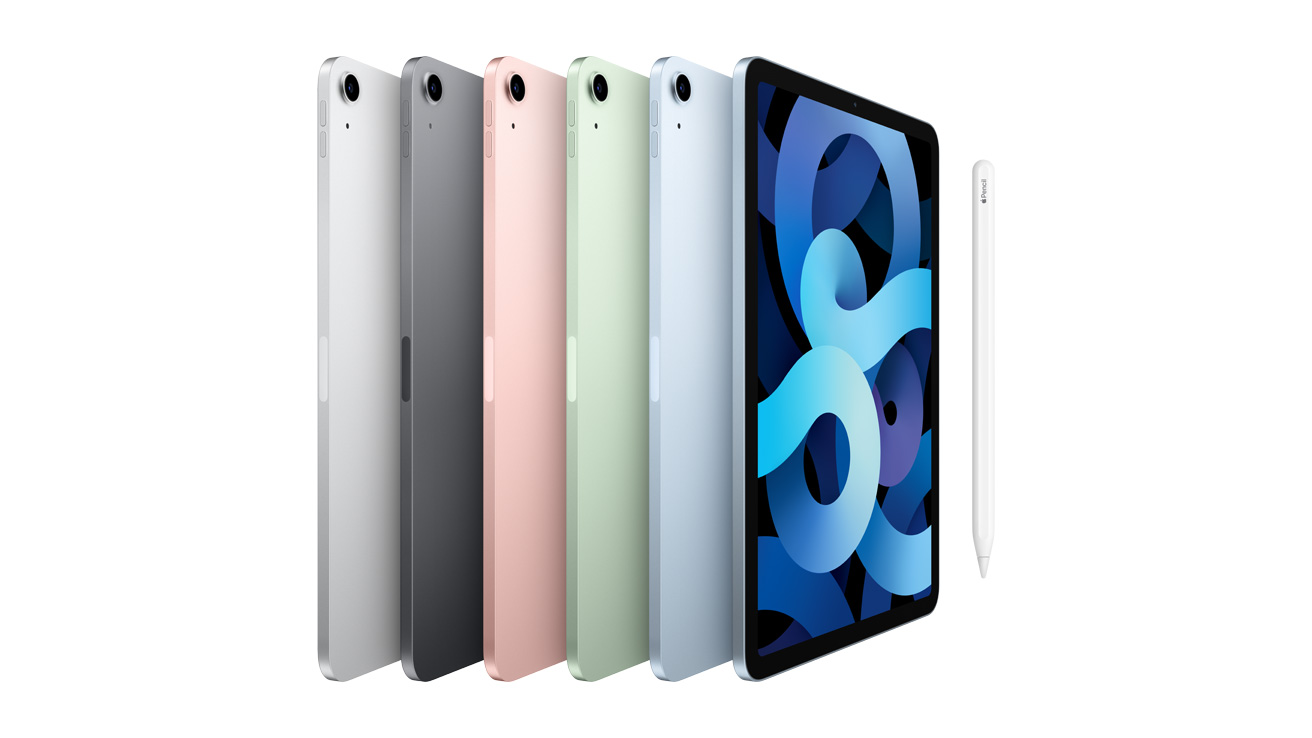
The iPad Air has a 10.9-inch display. In terms of size and sharpness, it's so close to the 11-inch Pro that it makes effectively no odds which you choose in that regard. It also supports the P3 colour gamut, but is slightly less bright at 500 nits – but that's still easily bright enough for most work. However, it doesn't support ProMotion, and is a regular 60Hz screen, so when using Apple Pencil on it, you still get a really strong experience, but not quite the pro response that the Pro appropriately gives you. If you're looking to do concept sketches and note-taking that don't require the best possible precision, it's still more than capable.
iPad Pro vs iPad Air: Performance & battery
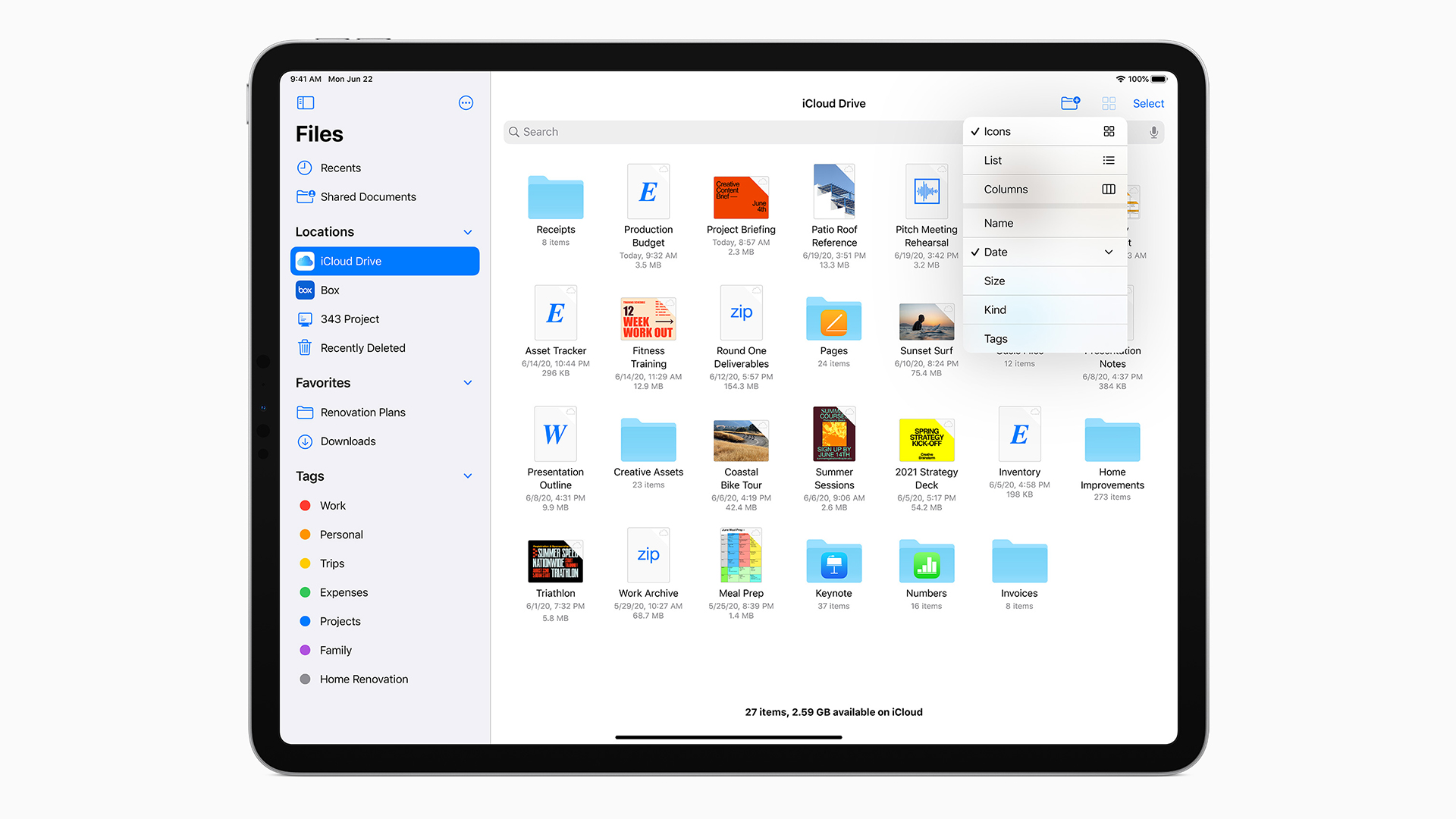
The iPad Pro is a phenomenally powerful computer – for sheer processing power, it can match a MacBook Pro in benchmarks, thanks to the addition of Apple's incredible new M1 chip.
It's extraordinarily difficult to make an iPad Pro stumble, and it's possible to create huge multi-layered canvases in image apps, to edit 4K video (in certain formats) on multiple tracks without issue, and to have as many as four apps on-screen at the same time.
The iPad Air is less powerful, but is certainly no slouch. It has an Apple A14 Bionic processor, which is also found in the iPhone 12 line up. As a simple working computer for documents and sketching, the iPad Air is more than capable. It's only when you get into some quite demanding needs that the iPad Pro may become a necessary option, though it can crop up in some unexpected ways: for example, popular Photoshop rival Pixelmator on iPad limits the maximum megapixel size of your file depending on the machine you're using, and this will change depending on the number of layers you're using as well as the size of the canvas.
You clearly get a lot more headroom on the iPad Pro than the iPad Air – the issue when using the Air is that it's hard to tell what balance of canvas size and layer use will turn out to be the upper limit for you. The Pro is the safer option if you plan to use it for demanding creative purposes.
When it comes to battery life, Apple rates all of its tablets for 10 hours of light use, and it's easy to get this from both the Pro and the Air for web browsing, movie watching and similar. But you can expect high-res image editing, or prolonged 3D rendering, to reduce this pretty severely, just as it is with any laptop. Exactly how much depends on the app, but something that taxes both processor and GPU, such as high-end games, can bring it down to about half that.
iPad Pro vs iPad Air: Software
This one's easy: there's no real difference between these two iPadOS machines, software-wise. Both currently run on iPadOS 14.
You've got multitasking of apps in Split View, and/or with one app in Slide Over (so it hovers over other apps). You've got drag and drop between apps, you've got Apple's powerful Shortcuts app for automating tasks, you've got the Files app for real file storage and transfers, you've got the ability to open multiple instances of the same app, you've got mouse/trackpad support, keyboard support… it's all here.
The mouse support is a recent addition, and while both machines support almost any Bluetooth mouse or keyboard, the official options work best, because there are certain gestures for multitasking supported on those that other options won't give you.
The official options are Apple's Magic Keyboard for iPad Pro – which is, let us be clear, VERY expensive but very good – or the Logitech Combo Touch Keyboard for iPad Air, which was produced in cahoots with Apple and is a much more reasonable price.
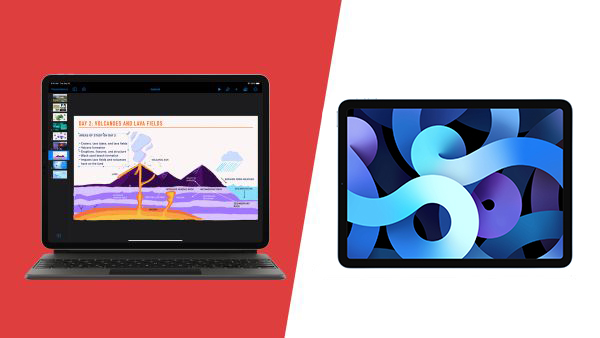
iPad Pro vs iPad Air: Verdict
This really comes down to what you need from a tablet, and what you're willing to spend. The iPad Pro is better than the iPad Air in most ways, but it costs a fair bit more, so it's about whether those improvements are a fair investment for you.
When it comes to drawing, the 120Hz screen response rate makes the iPad Pro the precision instrument of choice undoubtedly – and nothing comes close to the LED display on the 12.9-inch model. But the iPad Air is more than good enough if you won't use your tablet for your finest work.
The iPad Pro can be massively more powerful, but will you use apps that take advantage of it? If so, then obviously you should get the Pro, but for anything more middle of the road, the Air is really just as fast – if you'll mostly use it for viewing and some admin work on the go, there will be no meaningful performance difference.
However, as we mentioned, the ways that the Air might hold you back are not always predictable, so the Pro is definitely the future-proof option.
Read more:
- The 26 best iPad Pro apps to make your Apple Pencil shine
- The 15 best iPad apps for designers
- 22 incredible drawing apps
Matt has been testing technology for over a decade, working in specialist Apple publications as well general technology and creative journalism. By day, you can find him covering TV, audio, smart home gear and more at T3.com, as Home Tech Editor. By night, he's probably updating or pairing or installing some new piece of technology in the quest for the perfect setup.
Related articles
Source: https://www.creativebloq.com/features/ipad-pro-vs-ipad-air